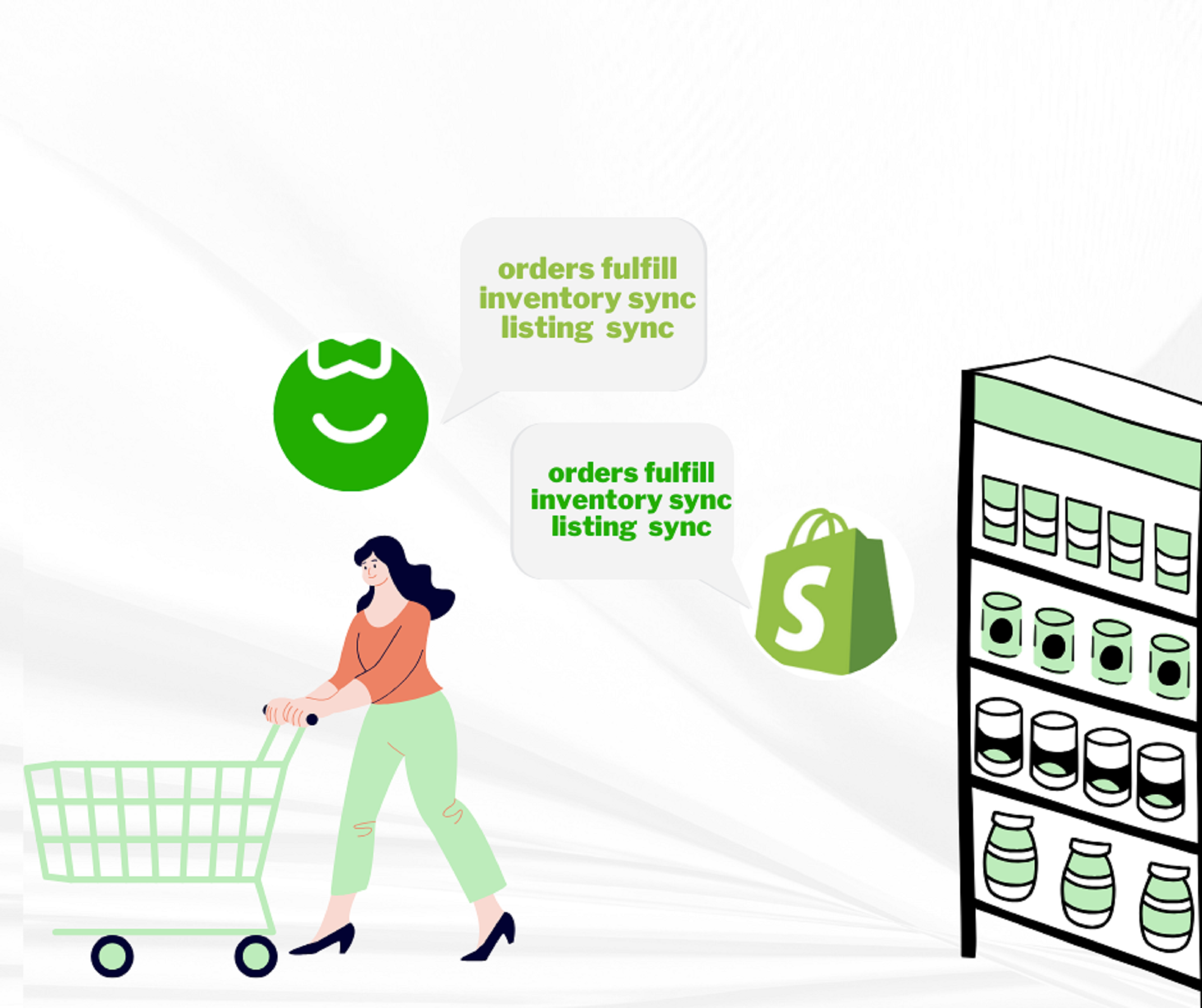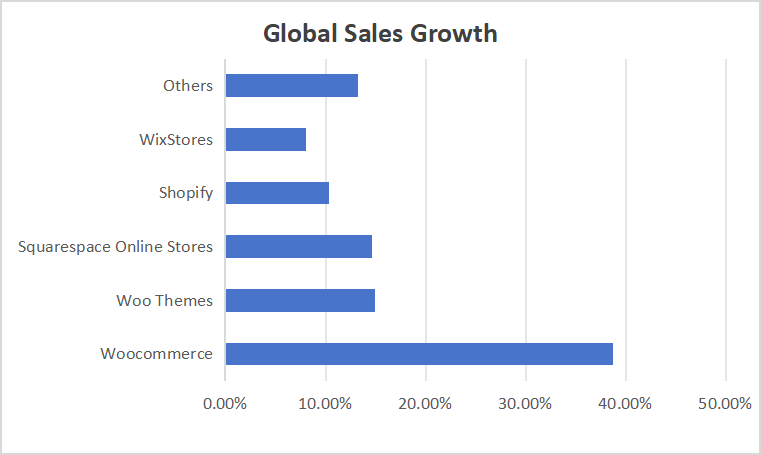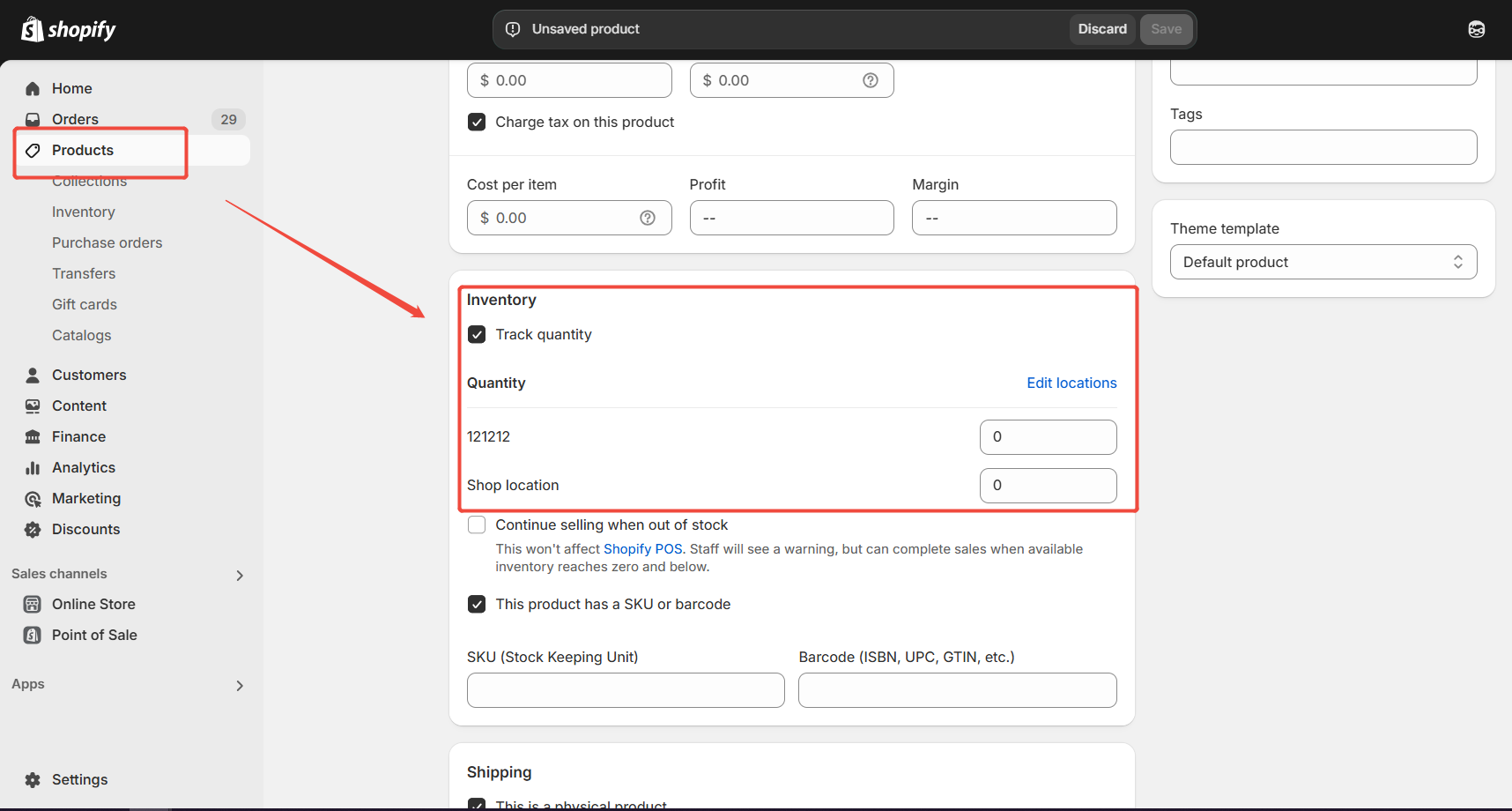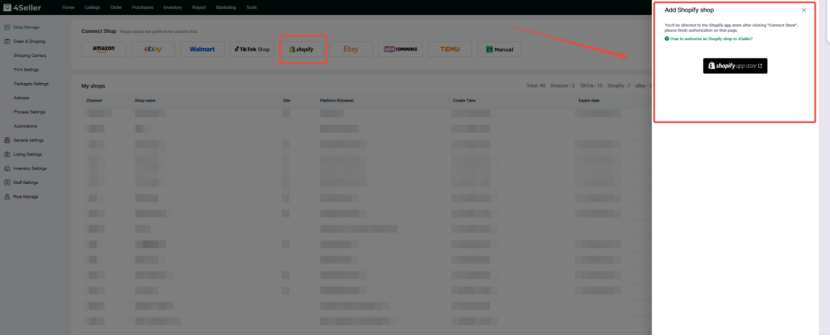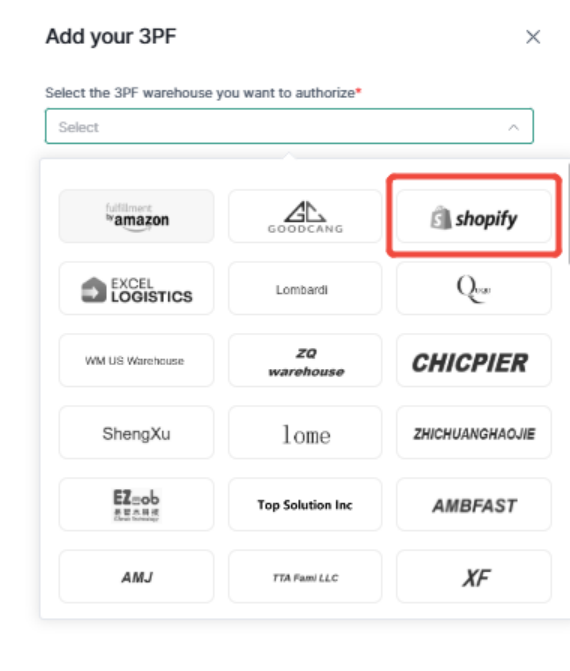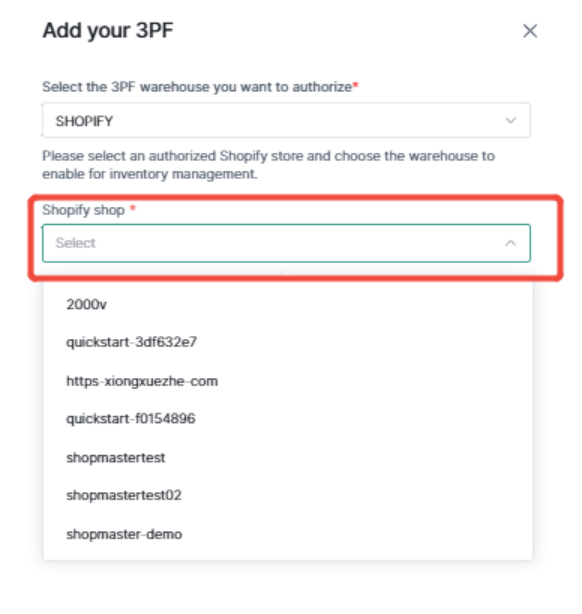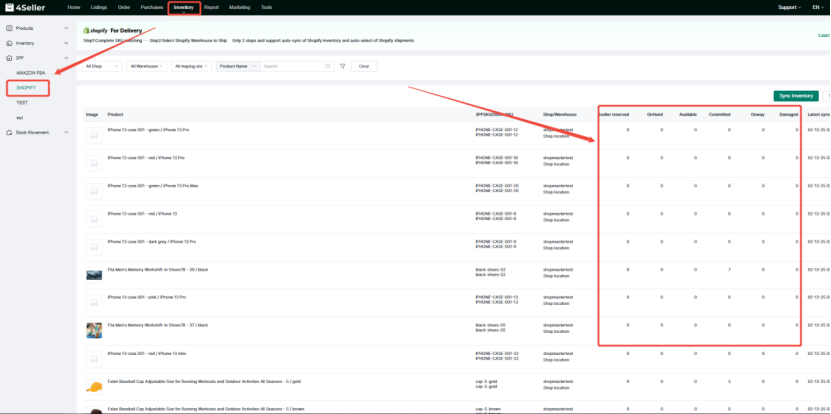How Can Shopify Be Used for Inventory?A Guidance Worth Reading!
 By Amelia14 Feb,2025
By Amelia14 Feb,2025
With the advancement of technology, online shopping has become a rapidly developing shopping mode. The large-scale operation of many e-commerce platforms also reflects the continuous increase in the number of sellers. Here is a report show the global ecommerce sales growth.
However, how can the traditional inventory management model meet the growing demand for orders? Therefore, each platform has also launched inventory management functions, which can provide real-time inventory data, help sellers keep track of inventory levels at any time, prevent inventory shortages or overstocking, and can also automatically input inventory data, reducing human errors.
As of 2023, there are more than 26 million e-commerce sites worldwide, and it is predicted that this number will continue to grow in the future as the economy of independent and private traffic develops. Data obtained from the Internet shows that as of 2023, Woocommerce is the world's leading e-commerce platform with a 39% market share. Woo Themes and Squarespace's online stores ranked second and third, respectively, while Shopify ranked fourth with a market share of nearly 11%.
Source Statista
Shopify, as the world's leading e-commerce platform, can be used for inventory management. It offers a range of built-in features that allow you to track, manage, and optimize your inventory effectively. Here’s a detailed overview of how Shopify can be used for inventory management.
In 2020, the Shopify platform facilitated a total transaction volume of up to 119.58 billion US dollars. As of June 2021, its total gross merchandise volume (GMV) had reached 79.5 billion US dollars, an increase of 12.1 billion US dollars compared to the previous year. This data not only demonstrates the strong growth momentum of Shopify but also reflects that its GMV is continuously climbing at an astonishing rate.Shopify is a global leading e-commerce platform, featuring functions such as product management, order processing, multi-platform sales, inventory management, etc., with rich functions and numerous applications.
1.What is Shopify?
The inventory function of Shopify is very useful, It can centralize your inventory, automatically synchronize inventory data, provide real-time data to help inventory optimization, and support multi-platform sales to improve your inventory efficiency online and offline.
Next, I'll focus on using Shopify's inventory benefits, how to add inventory to shopify, how to use inventory reports to optimize your inventory, and how to manage inventory via third-party software.
2. Key Inventory Management Features in Shopify
2.1 Inventory Trackin
Product and Variant Tracking: Shopify allows you to track inventory for each product and its variants (e.g., different sizes, colors). You can set up inventory tracking for each item, ensuring that the system accurately reflects the available stock.
Multiple Locations: If you have multiple warehouses or storage locations, Shopify can manage inventory across all these locations. This is particularly useful for businesses with a complex supply chain.
2.2 Low Stock Alerts
Automated Notifications: You can set up low stock alerts to receive notifications when your inventory levels drop below a certain threshold. This helps you avoid stockouts and ensures you can reorder products in a timely manner.
2.3 Manual Inventory Adjustments
Adjustments for Returns and Damages: You can manually adjust inventory levels to account for returns, damaged goods, or other discrepancies. This ensures that your inventory records always match your physical stock.
2.4 Purchase Order Management
Creating and Tracking Purchase Orders: Shopify allows you to create purchase orders directly within the platform. You can track the status of your orders from suppliers and ensure timely restocking.
2.5 Inventory Reports
Detailed Insights: Shopify provides comprehensive inventory reports that give you insights into your stock levels, sales trends, and low stock items. These reports help you make informed decisions about restocking and managing your inventory.
2.6 Multi-Channel Inventory Sync
Sync Across Channels: If you sell on multiple channels (e.g., Shopify, Amazon, eBay), Shopify can sync your inventory across all these platforms. This ensures that your stock levels are consistent, no matter where you sell.3. How to Use Shopify for Inventory Management
3.1 Setting Up Inventory Tracking
3.1.1. Log in to your Shopify admin.
3.1.2. Go to Products.
3.1.3. Select a product.
3.1.4. Under Inventory, toggle on “Track quantity”.
3.1.5. Enter the initial quantity.
3.1.5. Repeat for each product variant.
4. Utilizing Inventory ReportsShopify's reporting function enables merchants to comprehensively analyze sales, customer behavior, marketing effectiveness, inventory and financial data, providing real-time and multi-dimensional insights. It supports custom reporting and data export, thereby optimizing operational strategies, enhancing sales performance and customer satisfaction.
4.1 Monitor Stock Levels
Keep an eye o n current inventory levels to spot potential stockouts or overstock situations.4.2 Analyze Sales Trends
Identify best-selling products to optimize your inventory levels and purchasing decisions.4.3 Calculate Inventory Turnover
Measure how quickly your inventory is being sold and replenished to optimize stock levels and reduce holding costs.4.4 Identify Slow-Moving Products
Take action on products that aren’t selling well, such as discounting or discontinuing them.4.5 Evaluate Purchase Order Performance
Analyze your purchase order data to improve supplier relationships and optimize your restocking process.5. Enhancing Inventory Management with Third-Party Apps
While Shopify’s built-in inventory management features are robust, you can further enhance your capabilities with third-party apps. Some popular options include:
ShipHero: For advanced inventory and shipping management, especially useful for businesses with multiple warehouses.
Katana: A manufacturing-focused inventory management platform.
Stocky: Designed for Shopify POS Pro users to manage inventory more effectively.
Netsuite Inventory Management: Provides real-time inventory visibility and supports multi-channel sales.
Thrive by Shopventory: Offers multi-store inventory management with real-time data synchronization.
4Seller:Support users to connect Shopify, adjust Shopify inventory and sync inventory,also can snyc Shopify products and fulfill orders directly. In two simple steps: authorize Shopify stores and third-party warehouses to synchronize inventory data in real time, helping you efficiently manage inventory and avoid oversold stock shortages.
6. Conclusion
Shopify is the world's leading e-commerce platform, making it easy to set up and manage your online store, whether you're a start-up brand or an established business. With powerful features, flexible customization options, and seamless payment integration, Shopify lets you focus on growing your business without worrying about technical difficulties. From product listing to order processing to marketing, Shopify provides you with a one-stop solution to help you quickly reach customers around the world and start the road to e-commerce success!
Shopify has already become a major force in the e-commerce sector. Currently, there are numerous sellers worldwide, with their businesses spanning 175 countries. It has injected fresh impetus into breaking the traditional single sales model. In the vast world, Shopify enables any seller that can link to the Internet to expand their sales territory.
- 09 Apr,2025
- 09 Apr,2025
